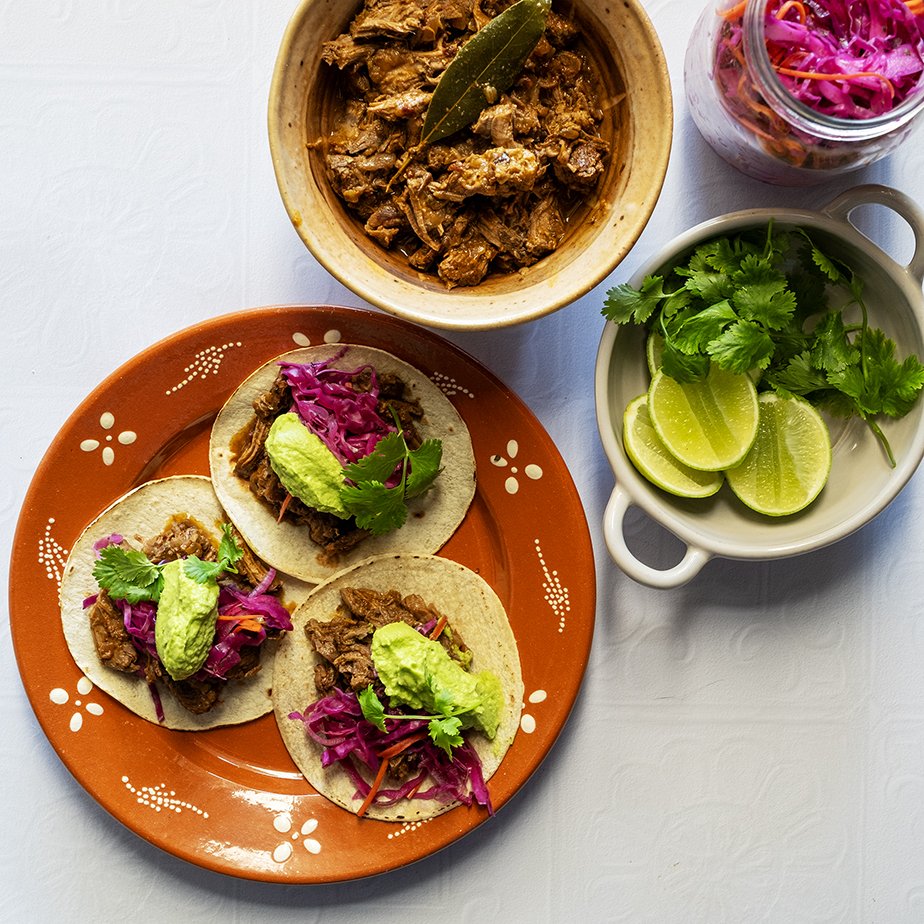Green cabbage, or red? What’s the diff
Cabbage is boring, right? Not really. We know it’s not as sexy as asparagus or fennel or artichokes but it’s a hard-working, affordable staple in most kitchens. When should you use bog standard green cabbage and when should you reach for red? While you might not be able to tell between them in a blind test, they are a little different.
Cabbage is thought to have originated in Europe, with wild ancestors found along the Mediterranean coast. Its cultivation dates back thousands of years and the ancient Greeks and Romans were among the first to domesticate it. Over time, cabbage spread, becoming a staple crop in many parts of the world due to its hardiness and versatility. A whole cabbage will last for literal weeks in your fridge, making it a handy thing to have around.
Red cabbage is also Mediterranean in origin, but its cultivation spread to cooler climates in Northern and Eastern Europe where it became especially popular. Interestingly the anthocyanins are thought to provide some level of protection for red cabbage against cold temperatures, making it a valuable crop in places where other vegetables might not thrive.
Green cabbage has a mild, slightly sweet taste with a mustardy hint that can become more pronounced as it matures. Or if it’s cooked too long (please, don’t overcook your cabbage). This subtle flavour and juicier texture make it work well in everything from salads to soups, pickles and braises; we even used it in a fritter situation and it was delicious. When cooked, green cabbage takes on a tender texture and a richer, almost buttery flavour, especially when braised or sautéed. In soups and stews it provides body and a gentle sweetness to broths and sauces.
Red cabbage has a more robust, earthy taste with a slight peppery kick; it can come across as a bit strong, especially in salads if it’s not really thinly sliced (a mandoline helps with this). That flavour mellows when cooked though, becoming pleasantly sweeter, especially when paired with ingredients like vinegar, spices and apples in sweet-sour braises to accompany meats. Its crunchier texture and affinity for vinegar also make it great for pickling. Pickled red cabbage is a staple in many European cuisines, often served alongside rich meats to cut the heaviness. As is sauerkraut, which is a ferment made using either types of cabbage.
The colour of red cabbage bleeds out and dulls a little when braised or boiled and can even turn an unpleasant purple-blue if cooked with alkaline ingredients (for example if your cooking water has a high pH). To counter this, a little acid (vinegar, eg) will help keep the colour under control. Interestingly, the colour of red cabbage can even vary depending on the pH of its growing environment – in acidic conditions, it’s bright red, while in alkaline ones, it can take on that bluish tint. (And look, if you want to freak folk out, cook your red cabbage with a dash of baking soda and watch it, and everyone, turn blue).
Which One Should You Choose?
This comes down to the dish you’re preparing and personal preferences. If you’re looking for a versatile, mild-flavoured vegetable that can blend in, green cabbage is your best bet. Its tender, juicy texture and subtle sweetness make it great in salads (we prefer it over red), soups, and stir-fries, where it provides pleasant crunch without overpowering other ingredients.
If you’re after something with a bit more bite and a vibrant hit of colour, red cabbage is the way to go. Its bolder flavour and slightly more rugged texture make it a standout in pickled dishes, and in a veggie braise. Red cabbage is also a great choice if you’re looking to boost the nutritional value of a dish.









